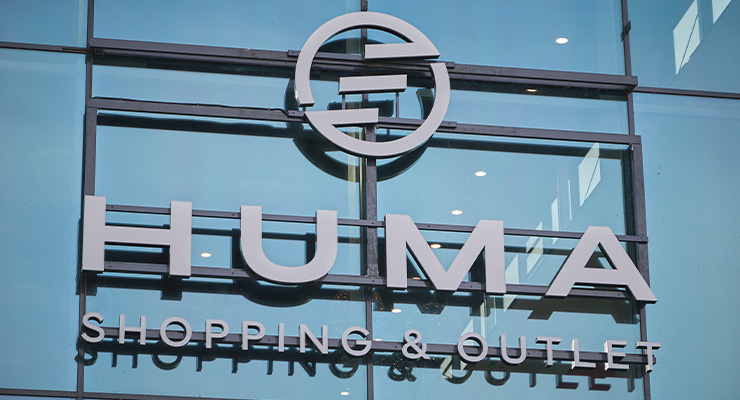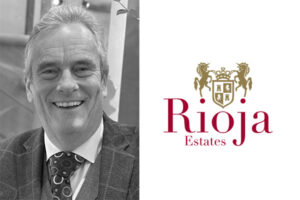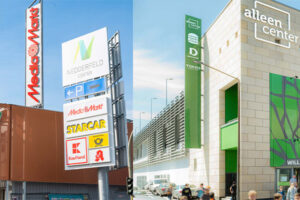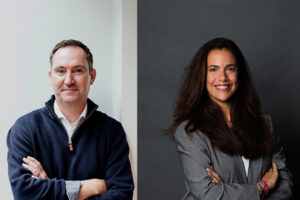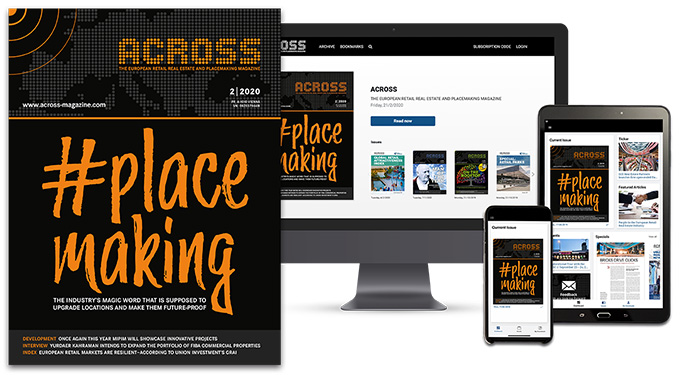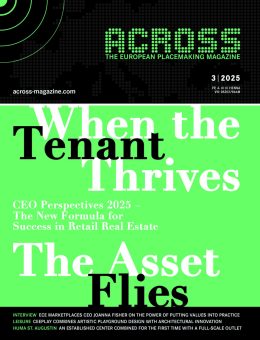ACROSS: FROM THE IDEA TO THE CONCEPT: HOW DID THIS UNCONVENTIONAL COMBINATION COME ABOUT?
DR. MAXIMILIAN GUTSCHE: Sankt Augustin has been an established retail location since the 1970s. Our company founder, Jost Hurler, recognized and nurtured the potential of the location at that time. Since then, it has been the central shopping destination in the region. When we began to fundamentally consider the future of the center in 2020/2021, one thing became abundantly clear: We wanted to optimize the space and eliminate vacancies, but we didn’t want to do so using standard solutions. We brought IPH on board as a partner during that phase.
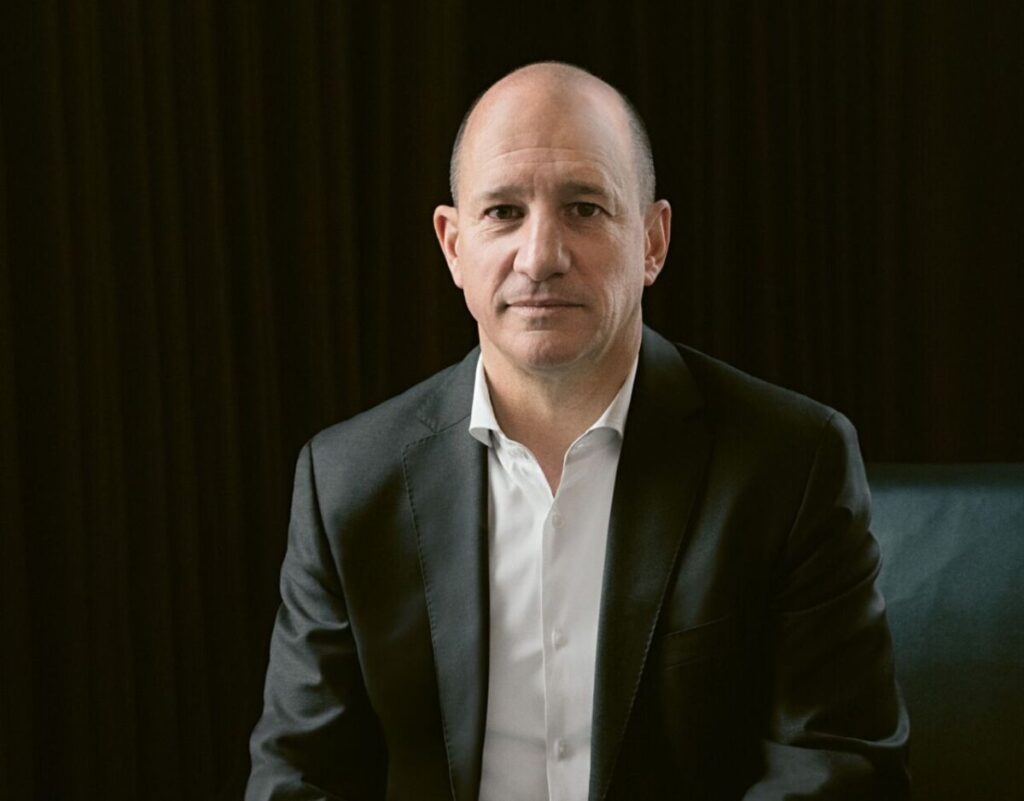
Dr. Maximilian Gutsche
Managing Director of the Jost Hurler Group
LARS JÄHNICHEN: Our task was to analyze the center and develop a concept for the vacant retail space. Creating something new at huma that would expand the catchment area and increase customer footfall was important to us from the very beginning. We didn’t see the vacancy rate at the time as a risk, but as an opportunity, and we asked ourselves: Why not combine a shopping center and an outlet? There’s virtually nothing like it in continental Europe. Anyone who takes a look at the outlet industry will quickly realize that Germany is a special case in this regard. Including huma, there are only 19 factory outlet centers, that is, properties with more than 20 shops and at least 5,000 square meters of retail space. Compared to other European countries, that’s a very low number, considering the size of the population. Moreover, consumer demand is there.
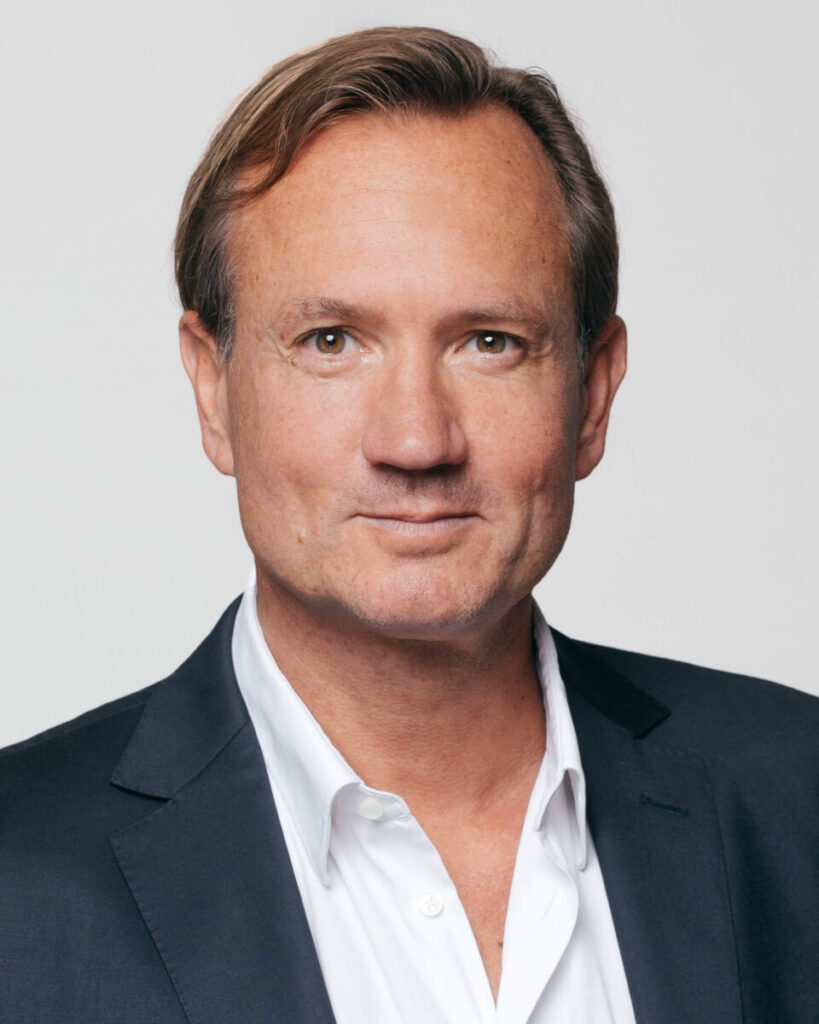
Lars Jähnichen
Director of the IPH Group
ACROSS: THE IDEA HAS BEEN UNDER DISCUSSION THROUGHOUT THE INDUSTRY FOR QUITE SOME TIME. WHEN LISTENING TO PEOPLE IN THE INDUSTRY, THE FACT THAT SHOPPING CENTERS AND OUTLETS SIMPLY HAVE DIFFERENT LOCATION REQUIREMENTS IS ALWAYS EMPHASIZED. WHY WAS THE SITUATION DIFFERENT IN SANKT AUGUSTIN?
JÄHNICHEN: The idea of developing a hybrid model in Sankt Augustin is linked not only to other market criteria but also, above all, to the location-specific factors in Sankt Augustin. The city does not have a traditional city center with a shopping street, as it was historically formed as a result of the merger of several municipalities. The huma shopping center is home to the majority of the city’s retail outlets. The catchment area is also very large: Two million people live within a 30-minute drive, and six million live within an hour. Three highways are in the immediate vicinity, there is a tram that takes people from huma to the next major city, Bonn, within 13 minutes, and there are two parking garages adjacent to the center, one of which is directly connected to the outlet level. Such a combination is one-of-a-kind.
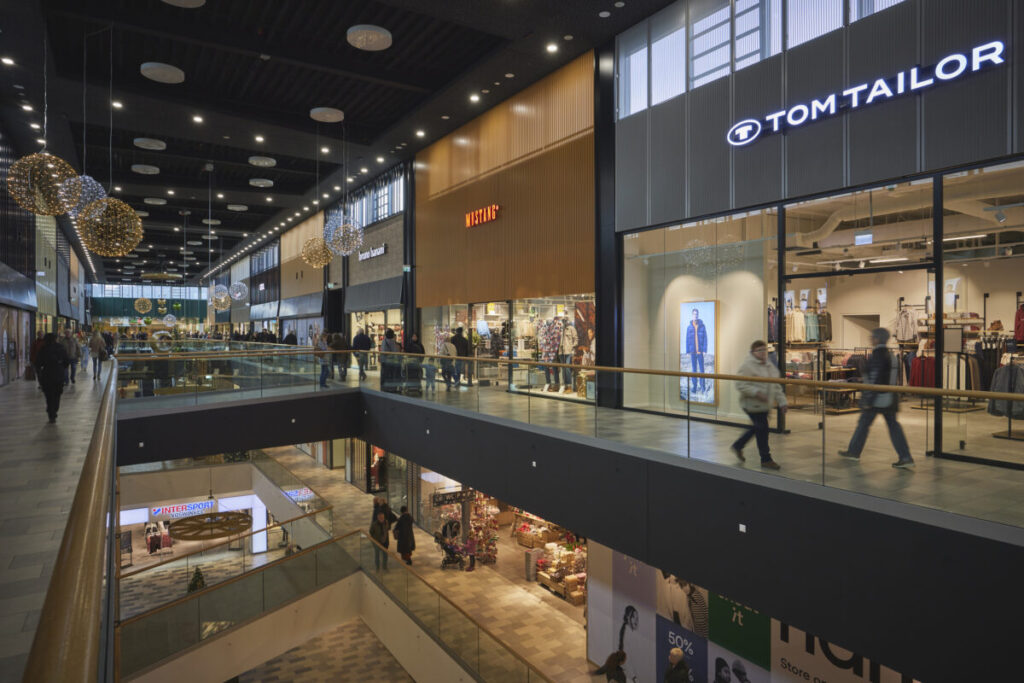
GUTSCHE: Our ownership structure is another factor. As a family-owned company, we can make bold decisions more quickly. Institutional investors might have been more hesitant to invest tens of millions of euros in a such project so soon after a complete modernization. The implementation was far from trivial, however. The fact that it took us 3.5 years to complete the project is proof of that. It was and has continued to be a bold and complex project. The expertise and collaboration of the individual partners have been crucial to its current success: Jost Hurler, the property owner, IPH, the project manager, and the architects, who were responsible for the design and construction, have all played key roles.
A PROJECT THAT HAS THE INDUSTRY TAKING NOTICE
When an entire floor of the huma shopping center in Sankt Augustin was converted to an “outlet world” in 2024, it was not only a milestone for the location, but a first in the German retail market as well. It marked the first time that a traditional shopping center of significant size has been successfully combined with an outlet – and not as a “bogus claim” but with genuine outlet operations, independent leasing, and targeted marketing. The resulting model, which combines shopping and outlet experiences under one roof, has proven to be a magnet for visitors, albeit under very specific conditions.
Jost Hurler Group: Owner and long-term operator
IPH Group: Overall management, marketing and leasing of the center
Haslinger Retail Real Estate Consulting: Marketing and leasing of the outlet area
Schwitzke & Partner: Interior architecture and design concept of the outlet floors
Chapman Taylor: Industrial-style architectural design
ACROSS: THE RESULTING BUILDING HAS TWO DISTINCT LEASING AREAS.
JÄHNICHEN: We have clearly separated the leasing activities: The outlet area is managed by Michael Haslinger, a proven industry expert. We are still responsible for leasing the mall. There are two teams who work closely together on tenant relations, marketing, and technology.
GUTSCHE: That was also necessary because the contractual logic was different. Outlet rents are almost always largely sales-oriented, with a higher marketing contribution per square meter and more opportunities for the landlord to exert influence. Different rules apply at traditional malls.
JÄHNICHEN: The two concepts are also reflected in the design and architecture. The outlet level was deliberately designed as a world of its own. International designers created an ambience that clearly distinguishes itself from the lower floors in terms of appearance, atmosphere, and brand presentation. Simply writing “outlet” above existing spaces does not work. Customers need to see and feel that they are in a different world.
ACROSS: HOW DO YOU DEAL WITH MARKETING, WHICH ALSO GREATLY DIFFERS BETWEEN THE TWO SEGMENTS?
GUTSCHE: The marketing strategies are different: The outlet advertises in a much larger radius – often with national radio advertising or out-of-home campaigns with a clearer brand focus – while the mall focuses more on local target groups. Despite the difference in size, the budgets are nearly the same: The outlet relies on reach, while the mall covers everyday communication.
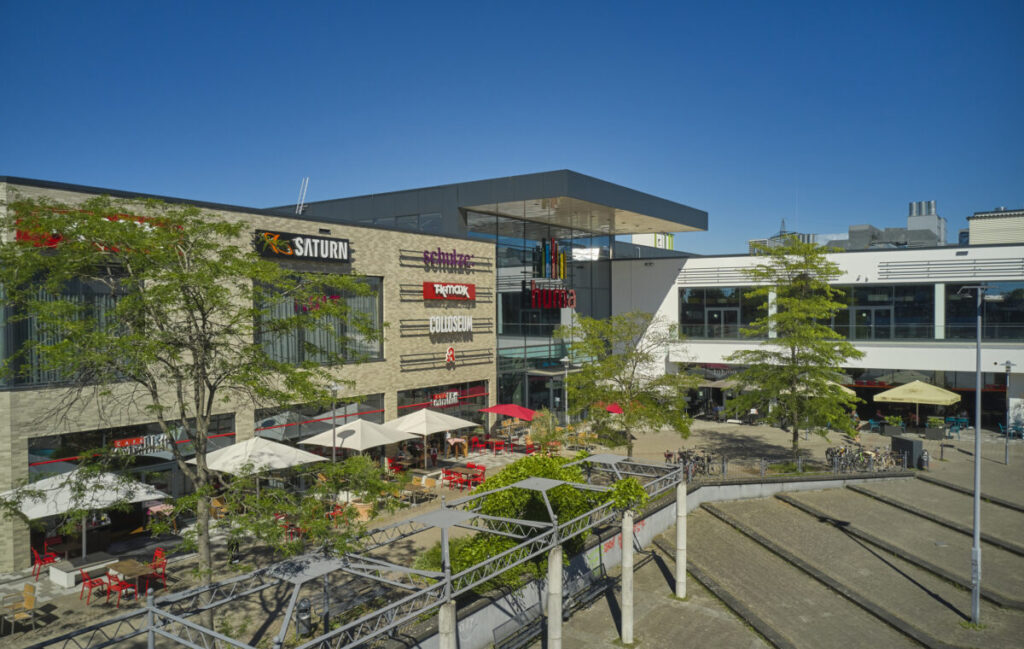
ACROSS: THAT BRINGS US TO THE ISSUE OF CUSTOMER EXPECTATIONS. EVERY CUSTOMER KNOWS EXACTLY WHAT A SHOPPING CENTER IS AND WHAT AN OUTLET CENTER IS. HOW DID YOU MANAGE TO RECONCILE THOSE DIVERGENT EXPECTATIONS?
JÄHNICHEN: It’s a clear win-win situation: It was a huge advantage for the outlet to start with a baseline footfall of around 5 million visitors per year. Those are the people who come to huma for their daily shopping anyway. No other outlet has that kind of baseline footfall generated by local supply, fashion, restaurants, and everyday needs when it opens. Outlets are usually built on greenfield sites and have to work hard to attract new customers – especially in the beginning. For huma customers, on the other hand, there’s been a great deal of excitement since the opening: They can buy their milk and T-shirts as usual – then discover international brands at reduced prices, which weren’t locally available before, on the two upper levels.
GUTSCHE: Customers didn’t need to be convinced that the concept was a good one. They immediately recognized the added value. Of course, we didn’t start out with the 120 shops that are currently located throughout the building, and the outlet area, in particular, is still evolving.
RESULTS IN FIGURES
Footfall increase: +5-8% above pre-coronavirus level; +15% 2024 compared to 2023.
Visitor Behavior: 58% of all shopping center visitors also visit the outlet level, in addition to guests who visit the center exclusively because of the outlet area.
Length of Stay: Significantly more customers stay for 1-3 hours, fewer for less than 60 minutes.
Turnover: Growth in all relevant sectors, no cannibalization in the fashion segment.
ACROSS: IN A NUTSHELL: WHERE DO YOU SEE THE GREATEST SYNERGIES?
JÄHNICHEN: Customers don’t have to decide whether to go to an outlet or a shopping center. They have both under one roof. For outlet tenants, the existing footfall is a gift, and for mall tenants, the new appeal of the brands is a bonus. Both sides benefit from each other. In the shopping center sector, that means: We currently have an occupancy rate of 96 percent, and we will reach 100 percent by the end of the year. We have just signed contracts with Snipes and Lovisa. Both are examples of brands that probably wouldn’t have chosen this location a few years ago.
GUTSCHE: It’s also interesting to note that industries that were previously considered potentially at risk are now benefiting. Fashion and footwear retailers in the full-price segment are experiencing strong growth. The beauty and gastronomy sectors are even enjoying somewhat of a boom.
ACROSS: WHAT WERE THE BIGGEST CHALLENGES AND SETBACKS THAT YOU FACED?
GUTSCHE: When we went public with the idea, the response from brands was huge. However, it’s a long way from interest to signing on the dotted line. Many waited to see who would be the first to commit. Setting this “flywheel” in motion was laborious. Today, we can see the herd mentality at work. Or, to put it another way: When Tommy Hilfiger arrives on the scene, everyone else follows.
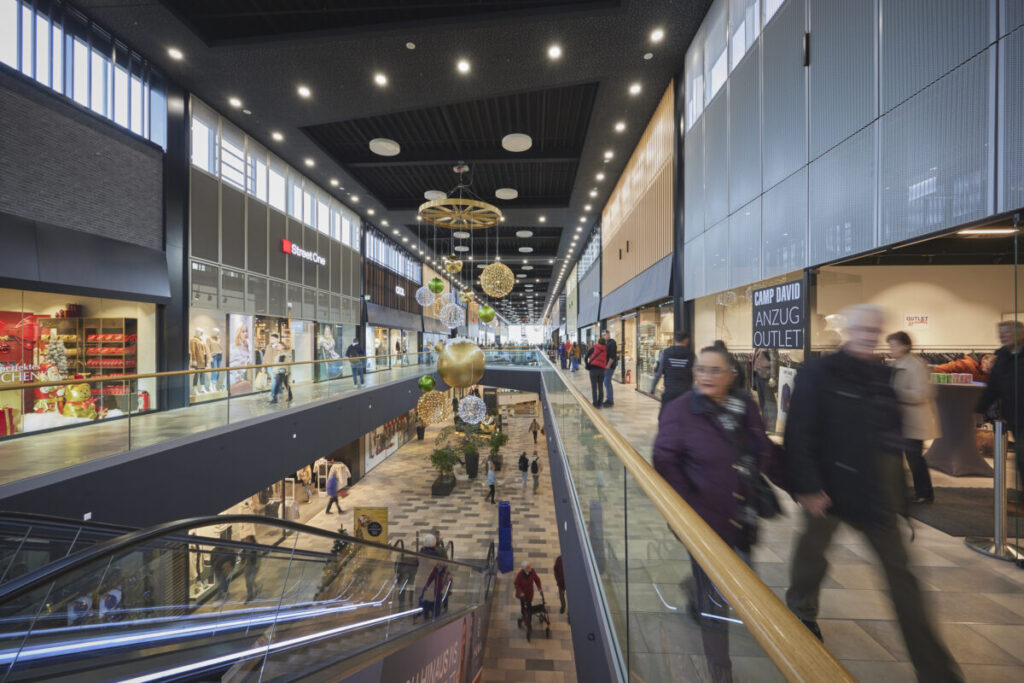
ACROSS: ISN’T THERE A GENERAL CONCERN ABOUT LOSS OF SALES IN THE FASHION SECTOR AMONG FULL-PRICE, MULTIBRAND RETAILERS?
JÄHNICHEN: There are potential conflicts between outlet and shopping center tenants, for example, when brands are represented in both areas. That has been defused through open discussions and space adjustments.
GUTSCHE: In the shopping center sector, there is only one traditional multi-brand retailer. We discussed our plans directly with them in an open and honest way. Communication is the key here. Ultimately, everyone wants the same thing – an attractive location. Today, we see the evidence: Sales have gone up since the outlet opened, even in the tough fashion and shoe sectors. Cannibalization has not taken place. Quite the opposite, actually.
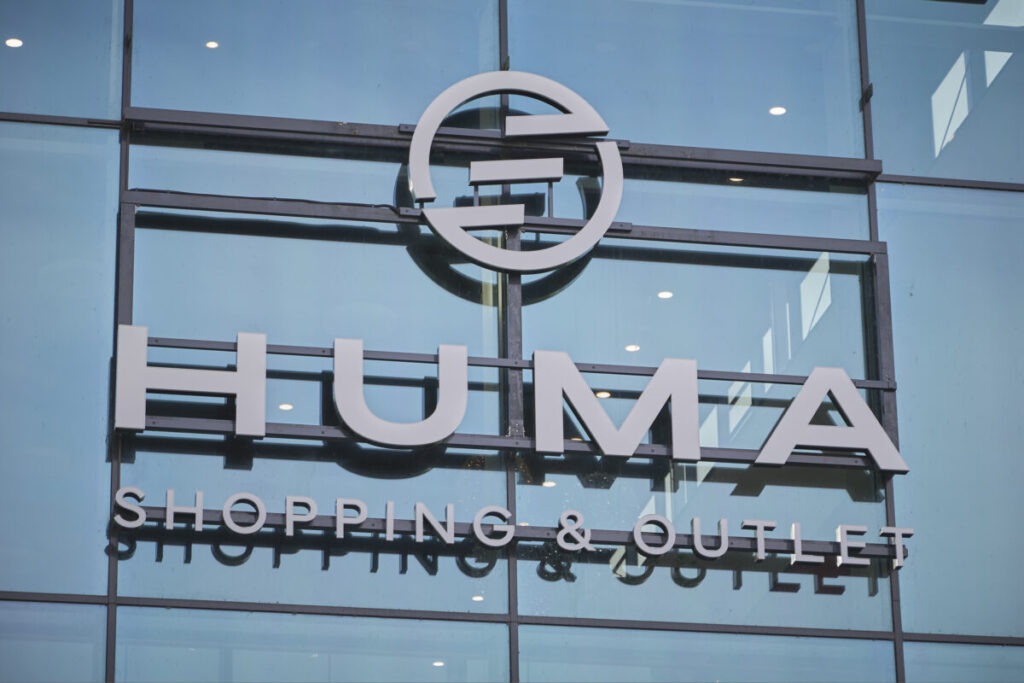
ACROSS: AT THE BEGINNING, YOU EMPHASIZED THE UNIQUE NATURE OF THE LOCATION AND THE PARTNERS INVOLVED. TO WHAT EXTENT CAN THE MODEL BE TRANSFERRED TO OTHER LOCATIONS?
GUTSCHE: Clearly: We have not developed a “mass product” here; all stakeholders are in agreement on that. The minimum requirements would include: a very large catchment area, excellent accessibility, no competition within the city center, structural separability, and legal leeway for approvals/permits. Many German locations fail to meet these criteria.
JÄHNICHEN: In addition to the location-based factors, the structural conditions at huma were particularly ideal. The different areas could be separated, while simultaneously remaining visible. Each area required its own identity, but the interaction between them had to function effectively. There were also practical considerations: huma has two parking garages, one of which is not located on the lowest level, but is directly connected to the upper floor. The outlet level is also located on the upper floor. As a result, that parking garage can also be used as an “outlet parking garage”, as visitors can access the outlet level directly from that point at ground level. If you look at the figures, there may be a handful of projects in Germany that could be converted in such a way – but only if all the conditions were right, especially those relating to the market. Owners must also be prepared to make bold investments.
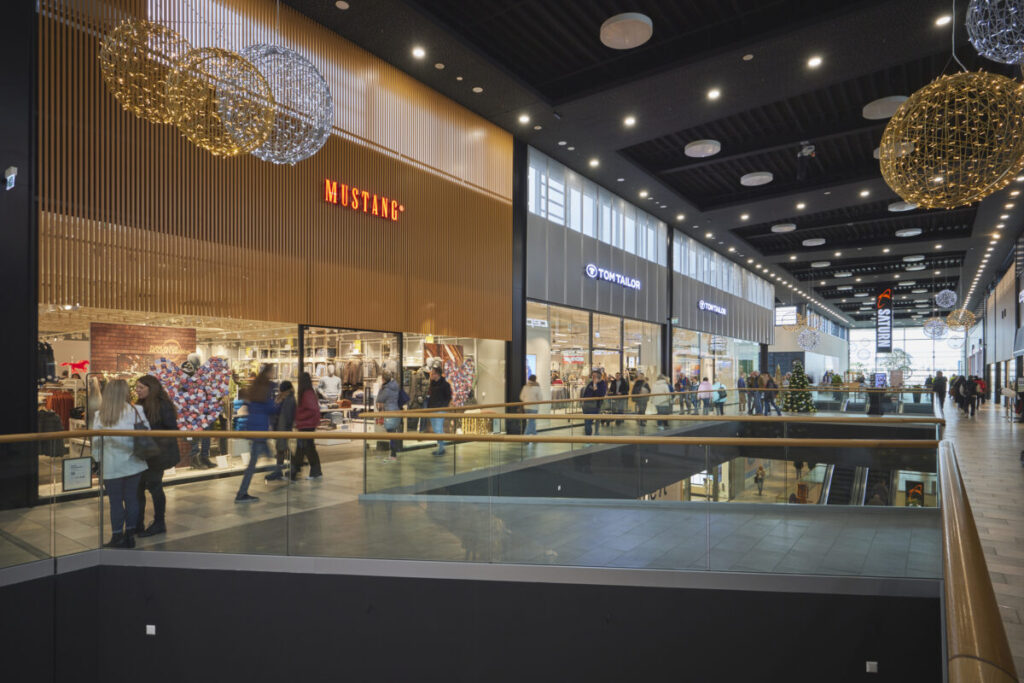
ACROSS: LOOKING AHEAD: WHERE DO YOU SEE THE GREATEST POTENTIAL FOR GROWTH?
GUTSCHE: A year ago, I wouldn’t have hesitated to say: in the outlet. Today, I consider both areas to be very strong. The momentum indicates that huma is an exciting example of the transformation occurring in the retail world. We will continue to enhance our profile in the outlet, for example, with athletic anchor brands. There are still a few major brands on our wish list. However, the traditional shopping center also remains a growth area. In that area, we are placing particular importance on expanding food service and beauty, which are considered growth drivers today.
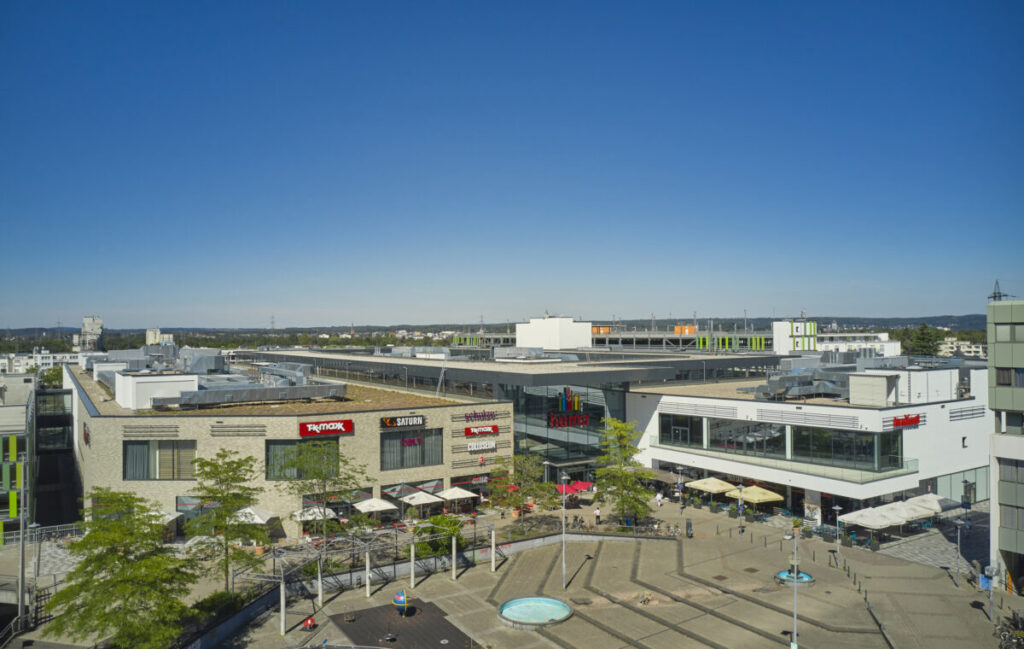
ACROSS: FINALLY, WHAT ADVICE WOULD YOU GIVE TO ANYONE THINKING ABOUT COPYING THE HYBRID MODEL?
JÄHNICHEN: First, conduct a thorough analysis of the catchment area, the competition, purchasing power, building conditions, etc. Then make your decision. In addition: Only start off with experienced outlet and shopping center leasing teams.
GUTSCHE: And, you have to be prepared to heavily invest in quality and to exercise a little patience before the first major leases are signed.
Credit for all images: Jost Hurler Group and IPH Group

